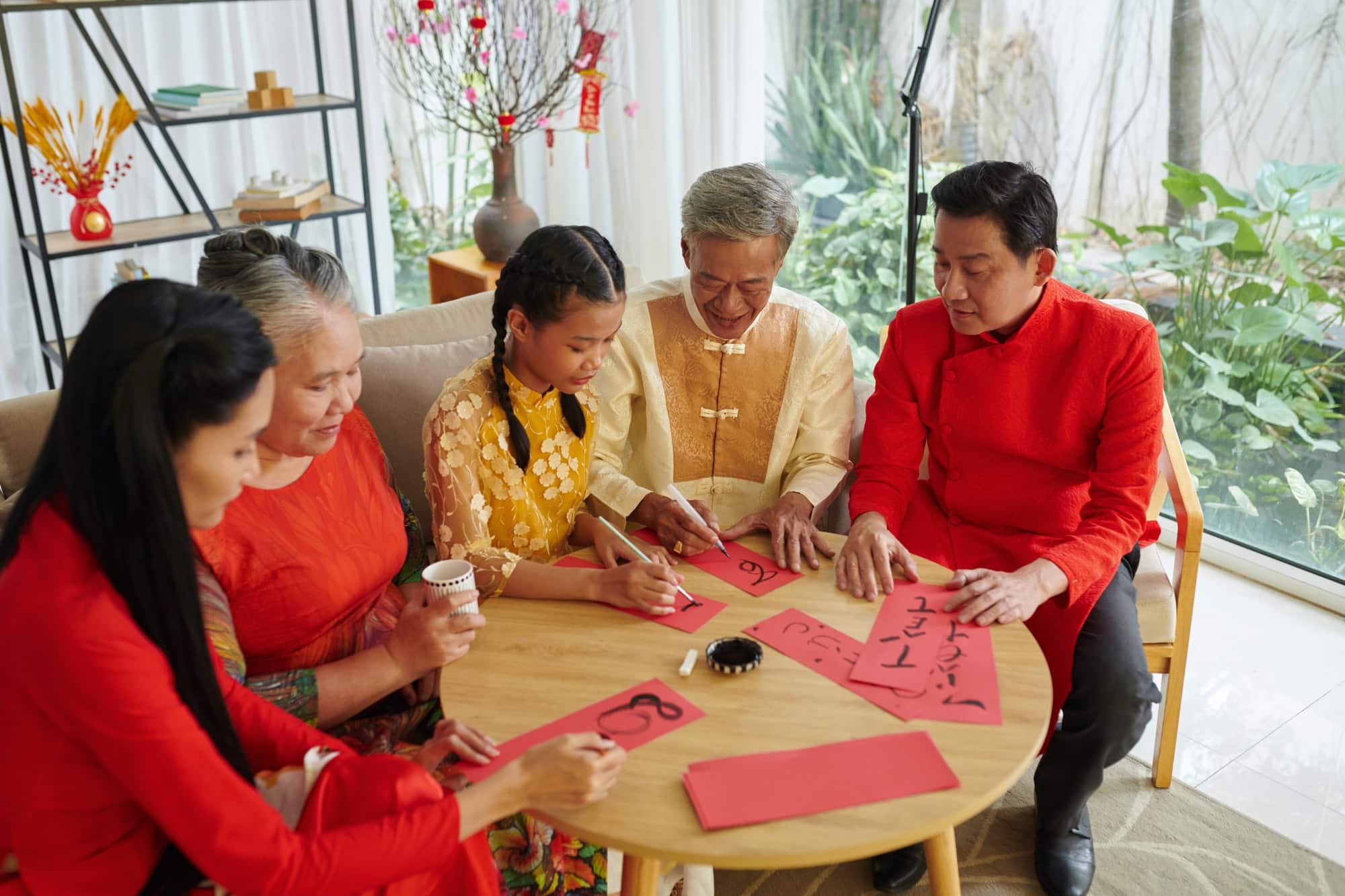How to Master the Art of Calligraphy and Hand Lettering for Beautiful Invitation Cards?

The beauty of hand lettering and calligraphy lies in their ability to transform ordinary paper into a piece of art. Their charm is old-world, yet their appeal remains timeless. Inevitably, they have made a resounding comeback in the world of weddings, where they lend a personal and elegant touch to invitation cards. If you wish to infuse your event with a distinctive style, mastering these two exquisite arts can be a rewarding endeavor. This guide will walk you through the steps to master these skills, helping you craft beautiful invitation cards that will make a lasting impression.
The Basics of Calligraphy
Calligraphy is an art form that requires patience, practice, and precision. The term itself is derived from the Greek words ‘kallos,’ meaning beauty, and ‘graphein,’ meaning writing. It refers to the design and execution of lettering with a broad-tipped instrument, brush, or other writing tools. A contemporary definition of calligraphy is "the art of giving form to signs in an expressive, harmonious, and skillful manner."
Have you seen this : How Is Immersive Theatre Transforming the UK’s Performing Arts Scene?
To start your journey with calligraphy, you will need a few basic tools. These include a calligraphy pen or a sharp pointed nib, a pot of ink, and high-quality paper. You may also opt for a beginner’s calligraphy set, which often includes an assortment of nibs, several ink colors, and a guidebook.
Once you have your tools ready, begin with understanding the structure of letters. In calligraphy, each letter is composed of several strokes. Practice these strokes individually before you try to combine them. Remember, consistency is key in this art form. The size, slant, and pressure should be uniform across your work.
Have you seen this : How to Enhance Your Gardening Skills with Advanced Permaculture Techniques?
The Intricacies of Hand Lettering
Unlike calligraphy, which is based on a set of strokes, hand lettering is based on drawing the shapes of letters. This art is about illustrating letters and making them visually appealing. The emphasis here is on the design aspect.
To begin with hand lettering, you will need a pencil, a set of pens with varying widths, and paper. Start by sketching your letters with a pencil. This will give you the flexibility to refine your design as you go. Once you’re satisfied with your sketch, you can trace over it with your pens.
Hand lettering offers more freedom in terms of style as compared to calligraphy. Experiment with different styles, sizes, and widths. Keep practicing and refining your work. Over time, you’ll develop your unique style.
Using Calligraphy and Hand Lettering in Wedding Invitations
Now that you’re equipped with the basic skills, it’s time to apply them to your wedding invitations. Keep in mind that your invitations are the first glimpse your guests will have of your wedding. They set the tone for the entire event.
Start by choosing high-quality envelopes and paper. This not only enhances your lettering work, but it also signals to your guests the level of care and detail you’ve invested in your wedding.
Next, decide on the information you need to include in your invitation. This usually includes the date, time, and location of the wedding, along with the names of the bride and groom. You may also want to include additional details like dress code or accommodation information.
Choose a style that suits the theme of your wedding. If your wedding is formal, you might want to stick to traditional calligraphy. For a more casual or modern wedding, hand lettering might be a better fit.
Practicing Your Skills Over Time
Calligraphy and hand lettering are skills that improve with time and practice. Start by setting aside some time each day to practice your strokes and lettering. Remember, progress might be slow at first. But with consistent practice, you’ll start to see improvements in your work.
A useful practice technique is to copy examples of calligraphy or hand lettering that you admire. This will help you understand the structure and style of different letter forms. However, make sure to develop your style over time instead of just replicating others’ work.
In addition to daily practice, consider taking workshops or classes. They can provide valuable feedback and help you refine your skills.
Exploring Different Applications
While this guide focuses on wedding invitations, the beauty of mastering calligraphy and hand lettering is that they can be applied to much more. From designing your wedding programs to creating personalized thank you cards, the applications are endless. They can also extend beyond your wedding. Think about hand lettered holiday cards or calligraphed birth announcements.
In conclusion, mastering the art of calligraphy and hand lettering can be a fulfilling pursuit. Not only does it allow you to add a personal touch to your invitations, but it also equips you with a skill that can be utilized in numerous ways. With time, patience, and practice, you can transform simple paper and ink into stunning pieces of art.
Calligraphy and Hand Lettering Tools and Styles
In the art calligraphy and hand lettering, the tools and styles you choose can make a significant difference. For example, modern calligraphy often uses flexible pointed pens like the dip pen, which allows for distinct thick and thin lines in each stroke. This variation in stroke width gives your lettering a dynamic and elegant look, ideal for wedding cards.
On the other hand, brush lettering primarily uses brush pens, which have a soft, flexible tip. The pressure exerted on the brush pen when writing creates thick and thin lines, adding a unique character to each stroke. Brush lettering is great for creating a more casual and playful feel.
However, the styles are not restricted to these tools alone. You can experiment with different calligraphy styles, such as Copperplate, Spencerian, and modern styles, each of which has a unique feel and form. Similarly, hand lettering styles can range from bold and blocky to whimsical and curvy. The key is to find a style that resonates with your personal aesthetic and the theme of your wedding.
Creating Wedding Stationery with Calligraphy Hand
Once you have honed your skills in calligraphy and hand lettering, you can begin to create your wedding stationery. This doesn’t only include your wedding invitation but also place cards, menus, order of service, and even personalised thank you notes.
Start by creating a cohesive design that matches your wedding theme and color scheme. Incorporate your calligraphy lettering and hand lettering into your design. For instance, you could use calligraphy for the names on your place cards and the headlines on your menus, while hand lettering can add a personal touch to your thank you notes.
Remember to create drafts and revise your work. This way, you can iron out any inconsistencies and ensure your final products meet your expectations. Don’t hesitate to seek feedback from friends and family. They can offer a fresh perspective and help you refine your designs.
Conclusion
Mastering the art of calligraphy and hand lettering for wedding invitations requires patience, consistency, and lots of practice. Start by familiarizing yourself with the basic tools and techniques, then steadily progress to creating your designs and integrating them into your wedding stationery.
The beauty of these skills lies in their versatility. They are not just for wedding invitations. From place cards to thank you notes, the possibilities are endless. And, with resources abundant, from online tutorials to workshops in the United States and beyond, you have all you need to get started.
Remember, the goal is not to become perfect overnight but to enjoy the journey of learning and creating. With time, you’ll not only have the skills to create beautiful wedding invitations but also the ability to add a personal touch to all your correspondence.
